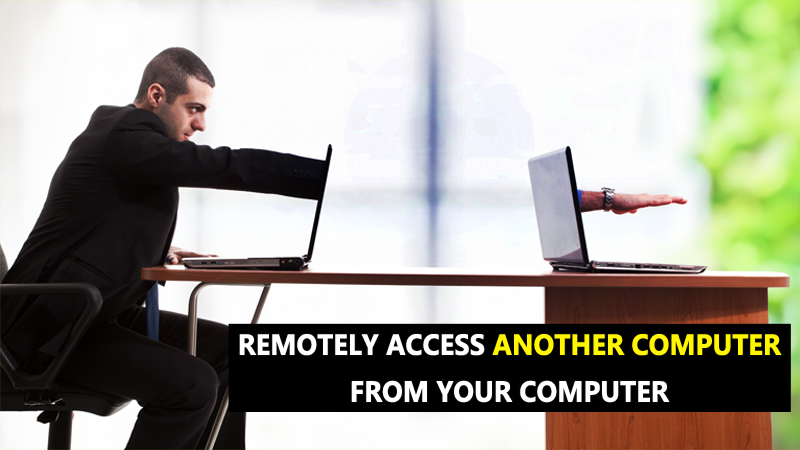

- TURN ON COMPUTER REMOTELY HOW TO
- TURN ON COMPUTER REMOTELY UPDATE
- TURN ON COMPUTER REMOTELY SOFTWARE
- TURN ON COMPUTER REMOTELY PC
- TURN ON COMPUTER REMOTELY WINDOWS
TURN ON COMPUTER REMOTELY UPDATE
For companies with employees that travel frequently, it is now easier for those employees to log in from anywhere in the world and update files, submit reports and access company information. Everyone with access to the server is working with the same versions of the same applications making the exchange of data smoother. This setup is ideal for a business with employees working from home or from numerous locations.
TURN ON COMPUTER REMOTELY SOFTWARE
With hosted desktop, upgrades to software and security matters are all handled by the Remote Desktop server company and included in the subscription price. This appeals to businesses that want to reduce capital costs for hardware and overhead costs pertaining to IT departments.

All that is needed is access to the Internet and a web browser. There is no additional hardware needed to link the remote user to the server. Remote Desktop offers a simple way for IT teams to run patches, updates, diagnostics and apply fixes to machines in their users’ home offices.Ī Remote Desktop server allows users to work from any location – at home, on the road, or in the office. Benefits of Remote Desktop for BusinessĪlong with other remote access technology, Remote Desktop is an extremely important tool for the post-COVID, work-from-home future.
TURN ON COMPUTER REMOTELY HOW TO
Check out this Microsoft support page for complete instructions on how to use Remote Desktop.

TURN ON COMPUTER REMOTELY PC
By default, the options to “keep your PC awake for connections when plugged in” and “make your PC discoverable on private networks” are both enabled. Click “Enable” Click Confirm to enable the setting.

To turn it on go to Settings > System > Remote Desktop.
TURN ON COMPUTER REMOTELY WINDOWS
Remote Desktop is built into Windows machines. You may have to change the sleep setting on the host computer to ensure it doesn’t turn off. Here are the basic steps for connecting to a PC using Remote Desktop: The machine you want to access must be turned on and remain on. For tasks and files that require heavy use of graphics, additional software may be necessary to ensure a smooth, responsive performance. Remote Desktop software captures mouse and keyboard inputs from the client device and sends them back to the host machine. With Remote Desktop, the host device powers the software and operating system, and displays it on the client device. It is often a server or virtual server environment in many business use-cases. However, the host device does not have to be a PC. on that PC without going into the office. How Remote Desktop WorksĪ basic example of Remote Desktop is connecting your home laptop to your office PC so you can access files, run applications, print documents, etc. Users can then control and use the applications and files on the host device from anywhere. Remote Desktop is a client application that allows a “client” computer to connect to a “host” computer from a remote location. If you have ever been on a tech support call and the technician takes over your mouse cursor to run a fix, they are using remote desktop technology. It lets users connect to a specific computer and control it over the internet as if they were right in front of it. To connect to a remote services MMC, click the Services name in the left pane, go to Action, then Connect to another computer… Once connected, you can operate the services just like you do on the local system.The easiest way to explain Remote Desktop is to say that it is a bit like using remote controlled software. Method 4: Service Manager MMCĪnd of course, we can always use the built-in Service Manager MMC (services.msc) to perform the job as well. You can also throw in the Test-Connection cmdlet in the script to test the remote connection before querying the service. And then pipe the result to Start-Service, Stop-Service, or Restart-Service to perform the respective actions. The -Force parameter here is to deal with the service with the dependencies.īasically, the Get-Service cmdlet with -ComputerName returns an object reference to the service in the question. Get-Service -ComputerName computername -Name servicename | Start-Service.Get-Service -ComputerName computername -Name servicename | Stop-Service -Force.Get-Service -ComputerName computername -Name servicename | Restart-Service -Force.But the following scripts seem to be the easiest ways to me: There are multiple ways to deal with services using PowerShell.


 0 kommentar(er)
0 kommentar(er)
